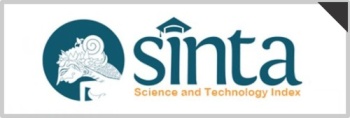SPATIAL PLANNING OF BENGAWAN SOLO RIVER WATERFRONT AREA TO STRENGTHEN BOJONEGORO CITY’S IDENTITY
(1) Universitas Indraprasta PGRI
(*) Corresponding Author
Abstract
Keywords
Full Text:
PDF (Indonesian)References
Baron, Martin., et al. (2020). Kajian Penataan Permukiman Waterfront Architecture Kampung Tua Tanjung Riau. Batam: Journal of Architectural Design and Development (JAD) Vol. 1 No. 1, Juli 2020, 71-84.
Breen, Ann., & Rigby, Dick. (1994). Waterfronts: Cities Reclaim Their Edge. New York: McGraw Hill.
Carr, Stephen., Francis, Mark., Rivlin, Leanne G., & Stone, Andrew M. (1992). Public Space, Environment and Behaviour Series. Cambridge: Cambridge University Press.
Hamidah, Noor., Rijanta, R., Setiawan, Bakti., & Marfai, Muh. Aris. (2016). Analisis Permukiman Tepian Sungai Yang Berkelanjutan Kasus Permukiman Tepian Sungai Kahayan Kota Palangkaraya. Samarinda: Jurnal Inersia Vol. XII No. 1, Mei 2016, 13-24.
Indonesia, Republik. (1993). Peraturan Menteri Pekerjaan Umum No. 63/PRT/1993 Tentang Garis Sempadan Sungai, Daerah Manfaat Sungai, Daerah Penguasaan Sungai dan Bekas Sungai.
Indonesia, Republik. (1997). Peraturan Pemerintah Republik Indonesia No. 47 Tahun 1997 Tentang Rencana Tata Ruang Wilayah Nasional.
Indonesia, Republik. (2000). Direktorat Jenderal Cipta Karya Departemen Pekerjaan Umum Tentang Petunjuk Teknis Penataan Bangunan dan Lingkungan di Kawasan Tepi Air.
Lynch, Kevin. (1960). The Image of the City. Massachusetts: The M.I.T. Press.
Memarian, Alireza., & Niazkar, Navid. (2014). The Lost Space of Architecture in the Context of Urban Lost Space. Bhopal, India: International Journal of Engineering and Advanced Technology (IJEAT) Vol. 3, Issue 5, June 2014, 311-321.
Mokodongan, Budi Kurniawan., Sela. Rieneke L.E., & Karongkong, Hendrik H. (2014). Identifikasi Pemanfaatan Kawasan Bantaran Sungai Dayanan di Kotamobagu. Universitas Sam Ratulangi Manado: Sabua, Jurnal Lingkungan Binaan dan Arsitektur Vol. 6 No. 3, November 2014, 273-283.
Prayitno, Budi (2005). A Sustainable Regenerative Study for Borneo Tropical Aquapolis Architecture. Bandung: The 6th International Seminar on Sustainable Environment and Architecture, ITB.
Sairinen, Rauno., & Kumpulainen, Satu. (2006). Assesing Social Impacts in Urban Waterfront Regeneration. Journal Elsevier: Environmental Impact Assesment Review Vol. 26, Issue 1, January 2006, 120-135.
Sastrawati, Isfa. (2003). Prinsip Perancangan Kawasan Tepi Air (Kasus: Kawasan Tanjung Bunga). Bandung: Jurnal Perencanaan Wilayah dan Kota Vol.14 No.3, Desember 2003, 95-117.
Torre, L. Azeo. (1989). Waterfront Development. Michigan: University of Michigan, Van Nostrand Reinhold Company.
Trancik, Roger. (1896). Finding Lost Space. New York: Van Nostrand Reinhold Company.
DOI: http://dx.doi.org/10.30998/lja.v6i2.19708
Refbacks
- There are currently no refbacks.
| Department of Architecture Faculty of Engineering and Computer Science Universitas Indraprasta PGRI Address: Jl. Raya Tengah No. 80, Kel. Gedong, Kec. Pasar Rebo, Jakarta Timur 13760 , Jakarta, Indonesia. |
|





